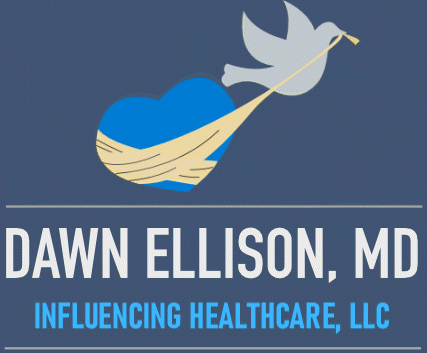You Can Change Your Path
When hospitals wanted us to be sure to wash our hands between patients; they put cleanser dispensers everywhere. So that you don’t leave your card in the ATM; your card must be removed before you get your cash. Perhaps the door to the patient’s room shouldn’t open until the dispenser is used. Tweaking the environment like this, makes good behaviors more likely.
Orders for patients with chest pain come bundled in most Emergency Departments so that we don’t forget to give aspirin and order labs that are important. The electronic health record could remind us that our diagnosis is pneumonia and we haven’t ordered an antibiotic yet.
DJ (in our previous blogs) literally changed his path to work and avoided driving by the very tempting fast food breakfast spot. Finding the critical behavior and changing the environment to make the good behavior more likely is fun to figure out and very effective!
Changing your environment can help build habits.
Smokers will tell you that they smoke when they drink alcohol or only when they're with certain friends or when they watch TV. When admitted to the hospital, they often don’t need nicotine patches.
We moved into our current neighborhood where several times a week the neighbors grill and celebrate during the summer and we all gained weight. Eating healthy is much easier if those around you also eat healthy, now we share great diet meals!
Just like drinking alcohol will trigger smoking; you can build in triggers to build good habits. In my coaching practice I encourage providers to enter a room with an open mind about the patient’s reason for coming. At times we are given information which leads us to suspect drug seeking or an “inadequate” reason for an emergency visit.
I suggest that the provider find something like the door handle to trigger them to have a blank slate with respect to their assumptions about the patient’s motives.
What other behaviors could be modified by triggers? Do you need to drink more water? Would you feel better if you got out of your chair to do some stairs? You have a device that you carry in your pocket; that can be set to alert you to get a drink, climb the stairs.
You can use triggers or cues to make change easier.
Like the summer celebrations which made us chunky together, the people we surround ourselves with, influence our behavior. When doing organizational change it is helpful to find the influencers and get them on board with leading the change.
Cool kids in schools influence their peers about acts of kindness and healthy habits. I often suggest that patients that are ready to quit smoking find others to commit to this healthy step also. Making change together gives us needed support and can even make it fun.
Our environment and the people in it can build the habits that we desire for ourselves and others. When we use the metaphor of the rider, the elephant, and the path we maximize the possibility of change and give structure to the plan. Intentionally using this metaphor in your family, community and organization leads to creative solutions for change.
Now that you are equipped with this knowledge of behavior change; imagine what you could do if you knew how to bring people together to innovate and collaborate around health, food systems, the quadruple aim, health equity.....
Here are some other articles you may enjoy reading
How Can You Move the Elephant?
Small steps make change more approachable. Explore different methods that will help lead your ‘elephant’ away from unhealthy habits and onto a path of success.
Three questions to help identify and develop a plan for removing obstacles that stand in the way of necessary change.
Have You “Failed” Your New Year Resolution?
Open the window for successful changes by redirecting old habits into easier (and healthier) behaviors.






